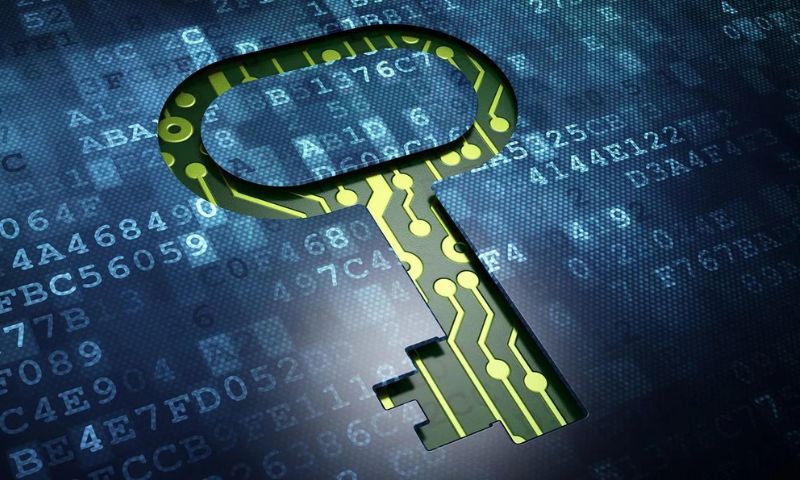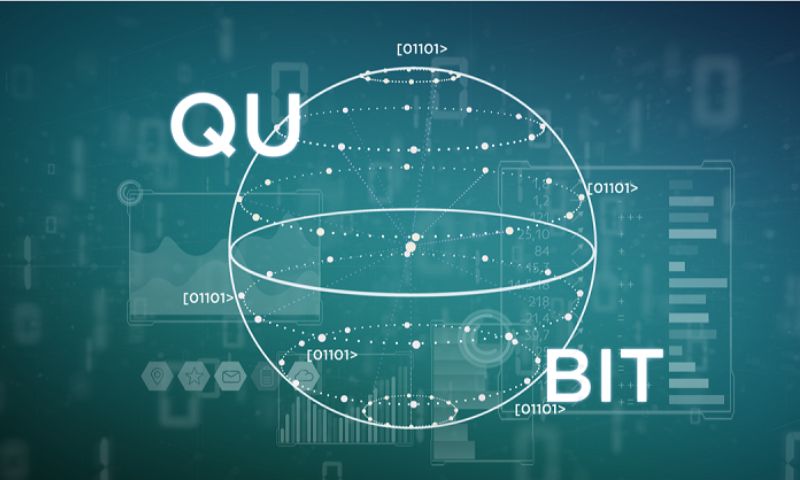Quantum-resistant Cryptography: Is Your Blockchain Bulletproof?
With quantum computing on the rise, our current cybersecurity could crumble like a house of cards. Think your blockchain is safe? Buckle up! I’m diving into quantum-resistant cryptography for blockchain to show you how reality bites, and what you can do about it. We’ll decode the quantum threat and then arm against it with future-proof crypto science. Got a stake in blockchain? This is a must-read.
Understanding the Quantum Threat to Blockchain Security
Quantum Computing and Blockchain Security
Think like a secret agent. Your messages must stay safe. Now, imagine a super-smart code breaker, called a quantum computer. It’s lightning-fast and can crack codes like never before. Your blockchain is like those secret messages. It secures data with tricky math. But quantum computers can solve this math in a snap. Here’s the big question:
“How does quantum computing threaten blockchain security?”
Quantum computing can break the math that keeps blockchain safe. This means it could get past the locks on your data doors. Now, let me walk you through how that happens.
Blockchain uses encryption, like secret codes. Today, these are tough to crack. But quantum computers use new rules. They do many things at once, not just one by one. This is bad news for blockchains because their secret codes are at risk.
Asymmetric Encryption Vulnerabilities
Let’s talk about locks and keys. Blockchains have what’s called “keys.” One is public, the other private. To keep it simple, these keys talk to each other to keep things safe. But there’s a problem. Imagine if someone had a master keymaker. That’s what quantum computers can become. They can make a key that fits any lock.
So, what’s the big deal with these keys?
“What are asymmetric encryption vulnerabilities?”
These keys I talked about – they can get copied by quantum computers. And copied keys are as good as stolen ones. Here’s why that’s scary. If a quantum computer copies your private key, it’s game over. All your blockchain secrets? They’re not so secret anymore.
Why does this matter? Well, this copying of keys can happen very fast. Right now, we don’t have quantum computers that strong. But one day, we might. That means we need to think ahead. We need our blockchains to be ready for quantum computers.
And ready means strong locks that even quantum key makers can’t crack. We call these quantum-safe encryption methods. There are many types, like lattices, hashes, and codes. These are fancy words for super-strong locks.
These new locks also need to follow rules, like the ones NIST is making. Think of it as a safety check for locks. It tells you which locks are strong enough for the quantum future.
Now you see why this quantum stuff matters. It’s not just about today’s safety; it’s about being safe tomorrow too. That’s my job – making sure your blockchains can stand up to quantum code breakers. We’re building a wall, brick by brick, with quantum-proof tools. And you can bet on one thing: when quantum computers come knocking, we’ll be ready.
Exploring Quantum-Resistant Algorithms
Lattice-Based Cryptography vs. Hash-Based Signatures
Let’s dive into a big issue. Quantum computers might break many blockchain locks. But fear not! Scientists are on it, crafting new keys. These new keys must resist quantum attacks. It’s like making a soup that’s just right — not too easy to spill, but rich in security flavors. First up is lattice-based cryptography. This gem can hide info in math puzzles. These puzzles are hard, even for quantum computers.
Now, hash-based signatures also come to the party. They take data and mix it up. It’s like a secret sauce. But once you’ve used it, you can’t use it again. That’s the rule.
Both methods are tough cookies for quantum baddies. And that is indeed what we need!
Code-Based Cryptography and Isogeny-Based Approaches
Moving on, we have code-based cryptography. It’s like sending a secret note that only your mate can read. It uses tricky math problems too. These problems have been around for ages. So far, they’ve stumped even the most bright quantum brains.
Then, there’s the new kid on the block, isogeny-based cryptography. It’s like a maze only two friends know through. They can meet in the middle, unseen by the quantum eye.
We need tools like quantum key distribution to keep blockchain safe. This tech shares keys in a way quantum spies can’t touch. To get this right, we follow NIST’s new rules for post-quantum cryptography. Keeping blockchain bulletproof is always our goal.
With a mix of new ideas and tough math, we stay ahead. We’re testing and choosing the best locks for a quantum-safe world. Making a better blockchain is hard, but that’s what makes it fun, right?
So, there you have it. It’s a race of technology. A blend of the old, the new, and the quantum-proof. We’re preparing for a future, secure against quantum threats. Together, with the right keys in hand, our blockchains stay unbroken.
Implementing Quantum-Safe Solutions for Blockchain
Quantum-Resistant Ledger Technology and Digital Signatures
New computers called quantum computers can break codes that keep our blockchains safe. To stop them, we need to make new, stronger codes. One way we can do this is with something called quantum-resistant ledger technology. This means creating a way to keep track of transactions that even powerful quantum computers can’t crack.
Imagine blockchain as a digital book where all transactions get written down. Right now, some of the locks on this book are easy for quantum computers to pick. Quantum-resistant ledger technology changes the locks to ones that are much, much harder to pick. It uses tough math problems that even quantum computers struggle with.
One particular way we do this is by using different kinds of digital signatures. These aren’t like the kind you scribble on a piece of paper. Digital signatures are special codes that prove who you are and that you approve of a transaction. The ones we have now might not work against quantum computers, so we’re inventing new types.
NIST Post-Quantum Cryptographic Standards and Hybrid Systems
The National Institute of Standards and Technology (NIST) wants to keep our digital information safe. They are working on rules called NIST post-quantum cryptographic standards. These rules will guide us in making quantum-safe codes.
It’s kind of like creating a super-strong recipe for a secret sauce that keeps our digital transactions safe. NIST looks at lots of possible recipes and picks the best ones to be standards. That way, everyone can use the same strong methods to protect their blockchains.
But we can’t just rely on one kind of code to protect us. That’s where hybrid systems come in. These systems use a mix of old and new codes just to be extra safe. It’s like using two different kinds of locks on your door. Even if a quantum computer picks one, the other lock still keeps the bad guys out.
This mix of old and new is how we are preparing our blockchains for any quantum troubles in the future. By using both classic methods and new quantum-resistant techniques, our blockchains remain as super-safe digital books of transactions. And that’s really important because keeping our digital world secure also keeps us all safe in real life.
Preparing Blockchain Systems for the Quantum Era
Cryptographic Agility and Forward Secrecy
We’re in a race against time. Quantum computers are on the rise. They pose big risks to blockchain security. We must stay a step ahead to keep blockchains safe. Being agile in cryptography is key. It means our systems can adapt fast to new threats. It’s like updating your armor in a tech war. Forward secrecy also matters a lot. It keeps old messages safe even if someone cracks the current keys.
Think of blockchain as a digital fortress. Quantum-safe encryption methods are the advanced locks. They protect valuable data from quantum attacks. Lattice-based cryptography is one such strong lock. But there’s more going on.
Post-Quantum Blockchain Innovation and Quantum Readiness
Leaders in tech are working hard on post-quantum algorithms. These new tools aim to block quantum threats. We’re testing solutions like hash-based signatures. These create really robust hash functions for blockchain. It makes it super tough for quantum computers to break in.
There’s also something called quantum key distribution (QKD). It’s a way of sending information that’s super secure. It uses quantum principles like superposition and entanglement. No spy, no matter how smart, could listen in without us knowing.
But there’s a challenge. We need quantum-proof blockchain solutions to be scalable. This means they must work well even as they grow big. The goal is to have systems ready before quantum attacks become real. We’re pushing hard for this quantum readiness in blockchain systems. It’s a must-have for the future of secure digital transactions.
Every day, we make progress. The National Institute of Standards and Technology (NIST) is on our side. They’re creating post-quantum cryptographic standards. These are the rules for how we can keep blockchains safe in the quantum era.
Innovation doesn’t stop there. We’re also looking at hybrid cryptographic systems. These mix old and new ways to shield data. It’s like having both a lock and a secret code on a door. One more layer just to be safe. We’re not taking any chances.
So, why all this effort? Because the stakes are high. Blockchains handle so much – money, contracts, even votes. We must prepare them for any quantum threat. Only then can we trust these systems with our most valuable assets.
Imagine a world where blockchain does even more. It could shape how we live, work, and play. But only if it’s quantum-proof. That’s the future we’re building – one where our digital lives stay private and secure, no matter what new tech comes along.
We’ve explored how quantum computers threaten blockchain security and looked at smarter, safer tech. Quantum machines can break today’s crypto, but we’re not stuck. New math, like lattice and hash tricks, are tough nuts to crack, even for quantum brains. We talked about how blockchains could fight back with quantum-resistant shields and fresh digital lock-and-key methods. Keep an eye on the top minds turning the tide with quantum-proof gear. It’s a race, and we’re gearing up for a future where our digital stuff stays safe. Stay sharp, keep learning, and be ready to adapt. It’s not just a tech leap; it’s our fight to stay several steps ahead in the quantum game.
Q&A :
What is quantum-resistant cryptography and why is it important for blockchain?
Quantum-resistant cryptography refers to cryptographic algorithms that are believed to be secure against an attack by a quantum computer. The significance of this type of cryptography stems from the fact that quantum computing is on the horizon, promising substantial computational power which could break the encryption algorithms currently securing blockchains. With quantum-resistant cryptography, blockchains can be safeguarded against this potential vulnerability, ensuring the integrity and security of data within these systems.
How does quantum-resistant cryptography differ from traditional cryptography?
Traditional cryptography typically relies on mathematical problems that are hard for classical computers to solve, such as factoring large numbers, which is the foundation of RSA encryption, or solving discrete logarithms, used in ECC (Elliptic Curve Cryptography). Quantum-resistant cryptography, on the other hand, utilizes algorithms based on mathematical problems that are believed to remain difficult for quantum computers to solve. This includes lattice-based cryptography, hash-based cryptography, and multivariate quadratic equations, which are not susceptible to the same quantum attacks.
What types of algorithms are considered quantum-resistant for blockchain security?
Several types of algorithms are considered to be quantum-resistant and are being researched and developed to protect blockchain technology. These include lattice-based algorithms like Learning With Errors (LWE), code-based algorithms, hash-based signatures like the Merkle signature scheme, multivariate polynomial cryptography, and secret-key cryptography with increased key sizes. Each of these algorithms offers a different approach to security and performance, and ongoing research aims to determine the most suitable options for blockchain applications.
Are current blockchains upgrading to quantum-resistant cryptography?
As of now, many current blockchain platforms are aware of the threat posed by quantum computers but haven’t fully upgraded to quantum-resistant cryptography. However, there is ongoing research and development, and some newer blockchain projects are being designed with quantum resistance in mind from the outset. Established blockchains are also considering future upgrade paths to incorporate quantum-resistant algorithms to secure their networks against quantum threats.
Can existing cryptocurrencies like Bitcoin and Ethereum become quantum-resistant?
Cryptocurrencies like Bitcoin and Ethereum can potentially become quantum-resistant through careful protocol upgrades that integrate new cryptographic standards. These changes would require community consensus and thorough testing to ensure the security and stability of the networks. For Bitcoin and Ethereum, the process would likely involve a combination of soft forks and hard forks to implement these new cryptographic measures without disrupting the continuity of the blockchain.


